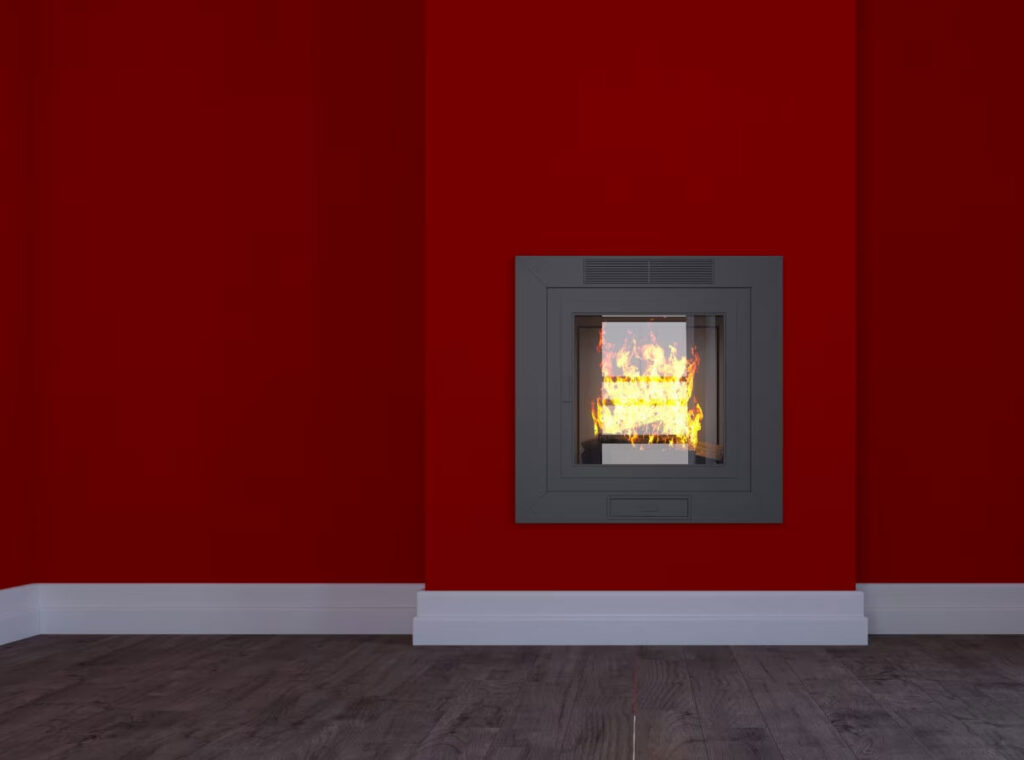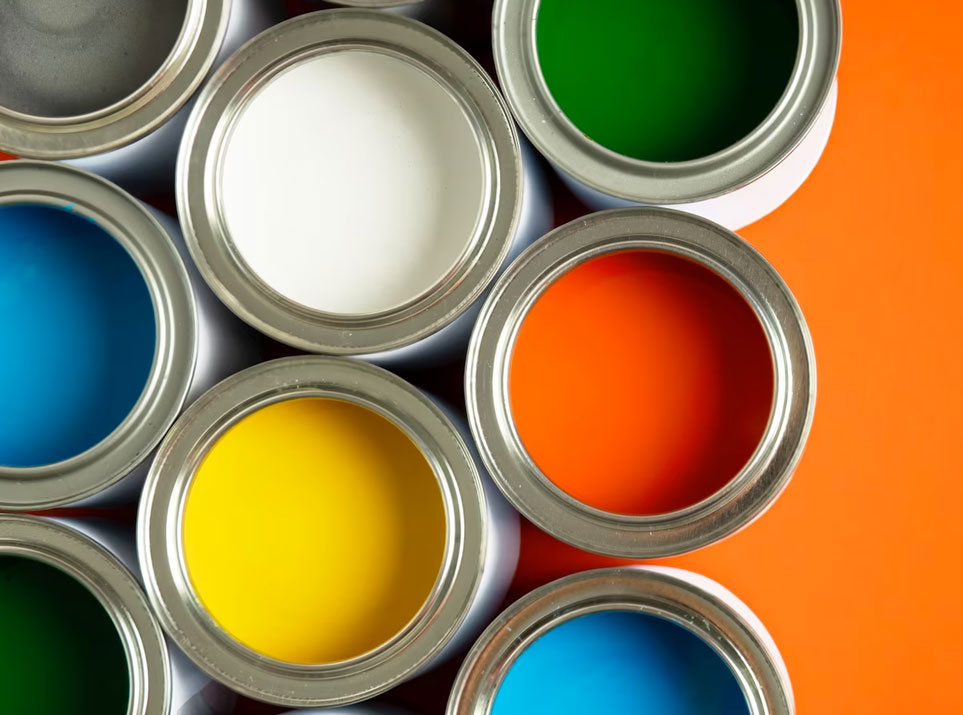A painted fireplace can make your home look nice and cozy.
It looks excellent and adds a great element to your house. But you need to take care of it to keep it looking great.
This article will show you easy ways to clean and fix your painted fireplace.
We’ll also tell you about the right paint to use. Following our tips, you can enjoy your beautiful fireplace for a long time on your living room. Let’s get started!
Maintaining the Fresh Look: A Cleaning Guide

We don’t want to waste any time, so let’s start by giving you a step-by-step cleaning guide.
1. Gather Your Supplies
Before you start, collect the necessary cleaning supplies, including a soft cloth or sponge, mild detergent, warm water, a bucket, and a vacuum cleaner with a brush attachment.
2. Remove Loose Debris
Begin using the vacuum cleaner with a brush attachment to remove loose dust, dirt, and debris from the fireplace. Pay special attention to the hearth and mantel.
3. Create a Cleaning Solution
Mix a small amount of mild detergent with warm water in a bucket. Be sure to use a detergent that is safe for painted surfaces. Avoid using abrasive or harsh chemicals.
4. Test in an Inconspicuous Area
Before applying the cleaning solution to the entire fireplace, test it on a small, inconspicuous area to ensure it doesn’t harm the paint or finish.
5. Clean the Surface
By dipping a soft cloth or sponge in a cleaning solution, wring out extensive moisture, and gently wipe the painted surfaces of the fireplace. Use light, circular motions to avoid streaking.
6. Address Stubborn Stains
You can create a good paste by mixing a small amount of water with baking soda for stubborn stains or soot buildup. Apply this paste to the affected areas, let it sit for a couple of minutes, and then scrub with a soft sponge or cloth. Check also: How to Hide TV Wires Over Fireplace.
Essential Cleaning Tips for Keeping Your Fireplace Fresh
If you want to maintain the fresh look of your painted fireplace without causing damage, consider the following tips.
- Avoid Abrasive Tools – Do not use abrasive scrubbing pads, steel wool, or harsh brushes, as these can scratch and damage the paint.
- Regular Cleaning – Perform light cleaning regularly to prevent the buildup of dirt and soot. This will make the cleaning process more manageable and prevent staining over time.
- Ventilation – Ensure proper ventilation when cleaning to prevent inhalation of cleaning fumes. Open windows or doors to allow for fresh air circulation.
- Dry Thoroughly – After cleaning, use a dry, clean cloth to wipe down the fireplace and ensure no leftover moisture, which can lead to streaks or water damage.
When and Why Touch-ups Are Necessary
Over time, painted surfaces can experience wear and tear, resulting in chipped or faded areas. This is especially common in high-traffic areas like hallways and door frames.
As you know, accidents happen, and paint can get chipped or scratched due to various mishaps. Understanding when and why these incidents occur can help you identify areas that need touch-ups.
Moreover, exposure to sunlight and environmental factors can cause paint to fade or change color over time. This is particularly noticeable on exterior surfaces. Check also: Ceiling Fans Made in the USA.
Tools and Materials Required for Touch-ups
Before you begin a touch-up project, gather the following tools and materials.
Paint – Paint is always handy to have.
- Paintbrushes and Rollers – As paint is the first item on our list, brushes are a no-brainer.
- Sandpaper – Can help smoothen surfaces or prepare them for fireplace painting.
- Painter’s Tape – Great item to make sure you keep all reapers within a distinct zone.
- Drop Cloths – These can help keep the created mess to a minimum.
DIY vs. Professional Help
When it comes to maintaining and updating your home interior, you’ll often face the choice between tackling tasks yourself or enlisting the services of professionals. Consider the following factors when making this decision.
1. DIY Maintenance and Touch-Ups
DIY projects can be budget-friendly since you won’t incur labor costs. You can often find affordable materials and tools for minor repairs and touch-ups. Completing a DIY project can be personally rewarding.
It allows you to own your home and adds a sense of accomplishment. DIY can be a quick and efficient solution for small, manageable issues like minor brick fireplace paint touch-ups, changing hardware, or simple home decor updates.
2. Professional Assistance
Professional help is often necessary for complex projects that require specialized skills or tools. Examples include electrical work, plumbing, or major structural changes. Professionals can quickly and efficiently complete tasks due to their expertise and resource access. This is crucial for large-scale renovations or time-sensitive projects.
Specific tasks, such as electrical or roofing work, pose safety risks. Professionals are trained to handle these risks safely. For projects that require permits or compliance with building codes and regulations, professionals are well-versed in navigating these requirements. Check also: How High to Hang Mirror Over Dresser.
Choosing the Right Paint (High-Heat Paint vs. Regular Paint)

Selecting the appropriate type of paint for fireplace surfaces is essential to ensure safety and aesthetics. This section will delve into the critical aspects of paint choice.
Here are some key point on some differences between High-Heat Paint vs. Regular Paint.
1, High-Heat Paint
Let’s highlight why you should opt for high-heat-resistant paint.
- High-heat paint is specially formulated to withstand extreme temperatures from fireplaces, wood stoves, or heating appliances. It is designed to prevent peeling, cracking, or discoloration when exposed to heat.
- This type of paint typically has a high heat resistance rating, making it suitable for use on the firebox, chimney, or any area near the flames.
2. Regular Paint
- Regular paint, such as latex or oil-based paint, is not designed to withstand the high temperatures produced by red brick fireplaces. Using regular paint on fireplace surfaces can lead to safety hazards and aesthetic issues.
- Regular paint can blister, emit toxic fumes, and create an unpleasant odor when exposed to heat.
Conclusion
Taking care of your painted brick fireplace is important to keep it looking nice and cozy. We’ve learned how to clean it gently and fix any problems that may come up.
Remember to choose the right paint and avoid using regular paint near the flames.
If you can, do small repairs yourself, but it’s best to ask professionals for help for big jobs or safety concerns.
With these tips, your fireplace will stay beautiful and make your home feel warm and welcoming for a long time.







